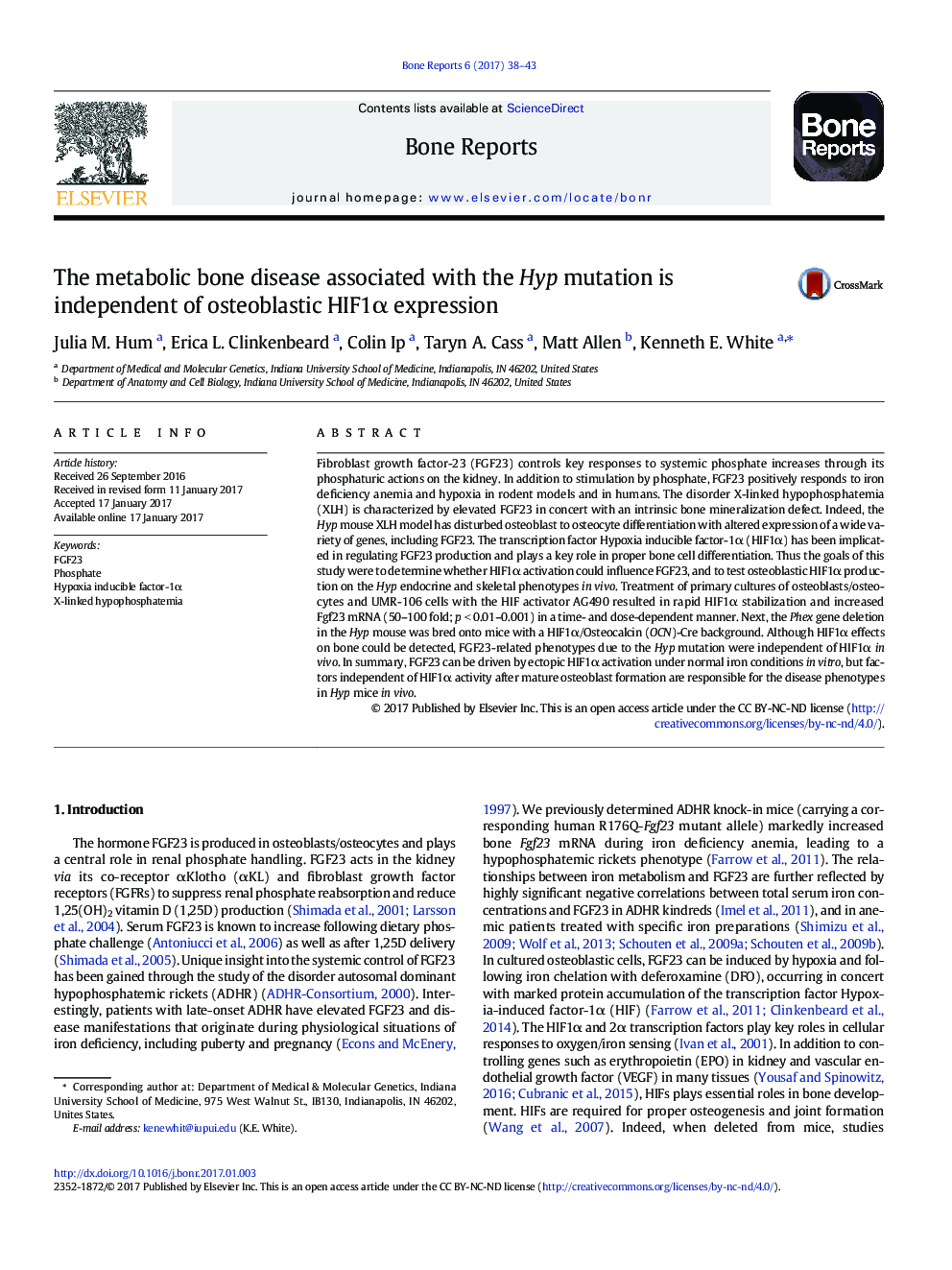| کد مقاله | کد نشریه | سال انتشار | مقاله انگلیسی | نسخه تمام متن |
|---|---|---|---|---|
| 5586725 | 1568666 | 2017 | 6 صفحه PDF | دانلود رایگان |
عنوان انگلیسی مقاله ISI
The metabolic bone disease associated with the Hyp mutation is independent of osteoblastic HIF1α expression
دانلود مقاله + سفارش ترجمه
دانلود مقاله ISI انگلیسی
رایگان برای ایرانیان
کلمات کلیدی
موضوعات مرتبط
علوم زیستی و بیوفناوری
بیوشیمی، ژنتیک و زیست شناسی مولکولی
علوم غدد
پیش نمایش صفحه اول مقاله

چکیده انگلیسی
Fibroblast growth factor-23 (FGF23) controls key responses to systemic phosphate increases through its phosphaturic actions on the kidney. In addition to stimulation by phosphate, FGF23 positively responds to iron deficiency anemia and hypoxia in rodent models and in humans. The disorder X-linked hypophosphatemia (XLH) is characterized by elevated FGF23 in concert with an intrinsic bone mineralization defect. Indeed, the Hyp mouse XLH model has disturbed osteoblast to osteocyte differentiation with altered expression of a wide variety of genes, including FGF23. The transcription factor Hypoxia inducible factor-1α (HIF1α) has been implicated in regulating FGF23 production and plays a key role in proper bone cell differentiation. Thus the goals of this study were to determine whether HIF1α activation could influence FGF23, and to test osteoblastic HIF1α production on the Hyp endocrine and skeletal phenotypes in vivo. Treatment of primary cultures of osteoblasts/osteocytes and UMR-106 cells with the HIF activator AG490 resulted in rapid HIF1α stabilization and increased Fgf23 mRNA (50-100 fold; p < 0.01-0.001) in a time- and dose-dependent manner. Next, the Phex gene deletion in the Hyp mouse was bred onto mice with a HIF1α/Osteocalcin (OCN)-Cre background. Although HIF1α effects on bone could be detected, FGF23-related phenotypes due to the Hyp mutation were independent of HIF1α in vivo. In summary, FGF23 can be driven by ectopic HIF1α activation under normal iron conditions in vitro, but factors independent of HIF1α activity after mature osteoblast formation are responsible for the disease phenotypes in Hyp mice in vivo.
ناشر
Database: Elsevier - ScienceDirect (ساینس دایرکت)
Journal: Bone Reports - Volume 6, June 2017, Pages 38-43
Journal: Bone Reports - Volume 6, June 2017, Pages 38-43
نویسندگان
Julia M. Hum, Erica L. Clinkenbeard, Colin Ip, Taryn A. Cass, Matt Allen, Kenneth E. White,